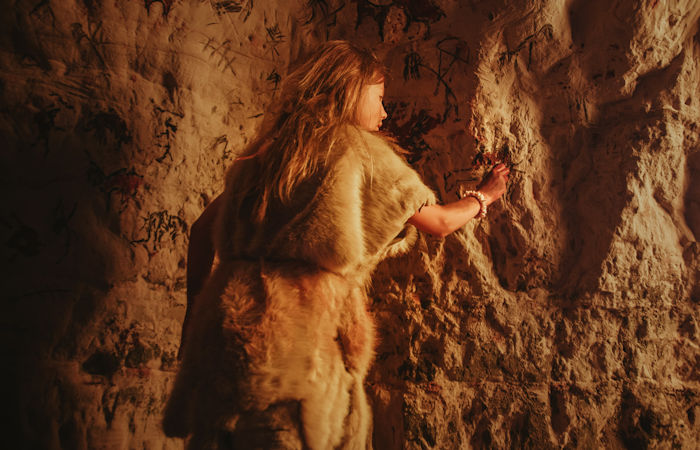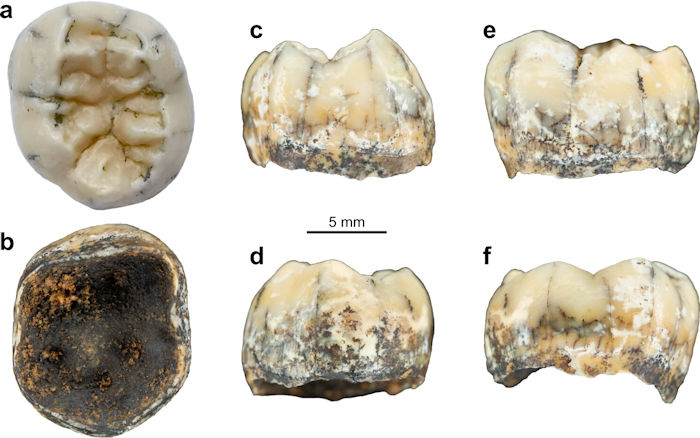Conny Waters – AncientPages.com – The Denisovans are an extinct species or subspecies of archaic humans who lived in Asia during the Lower and Middle Paleolithic. These ancient humans disappeared about 50,000 years ago. Denisovans are known from few physical remains, and, consequently, most of what is known about them comes from DNA evidence.

Credit: Adobe Stock – Gorodenkoff
Using DNA analysis, scientists have determined how Denisovans differed physically from modern humans and Neanderthals. Denisovans resembled Neanderthals in many key traits, such as robust jaws, low craniums, low foreheads, wide pelvises, wide fingertips, and large rib cages.
Scientists have gained much knowledge about the Denisovans, but one big mystery has remained unsolved until now.
In 2010 researchers discovered Denisovan teeth and finger bones that after a DNA testing revealed that the enigmatic hominins were among the ancestors of people alive today in Australia and the Pacific.
However, scientists could not understand how the Denisovans, whose scant remains had been found only in Siberia and Tibet, would have been able to interbreed with the group of humans who expanded east from Africa through Southeast Asia before reaching Australia, New Guinea, and other islands in the Pacific.
The geographic distribution of the Denisovans “remains debated. Modern Papuans, Aboriginal Australians, Oceanic/Melanesian, Philippine Ayta groups and, to a much lesser extent, mainland Southeast Asian populations, retain a Denisovan genetic legacy. Combined paleoproteomic and morphometric analyses recently suggested that the Middle Pleistocene Xiahe mandible from Baishiya Karst Cave belonged to a Denisovan, extending the known range of this group onto the Tibetan Plateau15. However, there is still no fossil evidence explaining the Denisovans genetic imprint on modern southeast Asian populations and—due to the paucity of the Middle Pleistocene fossil record—it is still unknown whether one or more human lineages (co)existed in continental southern Asia,” the scientists write in their study published in the journal Nature Communications.
A recent study of an ancient girl’s tooth may solve this long-standing mystery. The tooth was discovered in the Cobra Cave in Laos and it would seem it “puts Denisovans right in the path of modern humans who arrived in Southeast Asia tens of thousands of years later,” the New York Times reports.
Excavations in Laos have been very rewarding for archaeologists who among many interesting finds unearthed a human skull fragments dating back about 75,000 years, making them the oldest evidence of modern humans in Southeast Asia. many of the fossils found in the caves have been bones from extinct mammals, but while going through the fossils, scientists found a surprise: a molar that resembled a human child’s tooth. But some features of the molar suggested it was not quite human.
“We were so amazed and so excited,” Dr. Shackelford said.
Geologists examined the cave wall to determine the age of the tooth and the results of the study showed the tooth was between 164,000 and 131,000 years old. This was an extraordinary discovery that meant the Cobra Cave tooth was about twice as old as the oldest modern humans that Dr. Shackelford and her colleagues have found in the region.
Reconstructing the migration of the Denisovans has been difficult for scientists who had to rely on the ancient human remains unearthed in the Denisova Cave in Siberia.

Views of the TNH2-1 specimen.. Pictures of TNH2-1 in occlusal (a), inferior (b), mesial (c), distal (d), buccal (e) and lingual (f) views. Credit: Nature Communications (2022). DOI: 10.1038/s41467-022-29923-z
It was hard to see how people several thousand miles away, in Australia, New Guinea and nearby islands, could have ended up with Denisovan DNA.
Aside from these rare fossils, the Denisova man left little trace before disappearing—except in the genes of human DNA today.
Through interbreeding with Homo sapiens, Denisovan remnants can be found in current populations in southeast Asia and Oceania.
Aboriginal Australians and people in Papua New Guinea have up to five percent of the ancient species’ DNA.
Scientists concluded “these populations’ modern ancestors were ‘mixed’ with Denisovans in southeast Asia”, said Clement Zanolli, a paleoanthropologist and co-author of the study published Tuesday in Nature Communications.
But there was no “physical proof” of their presence in this part of the Asian continent, far from the freezing mountains of Siberia or Tibet, the researcher at the French National Centre for Scientific Research told AFP.
In 2019 scientists discovered a 160,000-year-old jaw in a Tibetan cave, and suddenly there was evidence the Denisovans had been present more than 1,400 miles south of Siberia.
As reported by the New York Times, “the scientists made a high-resolution scan of the molar’s surface and interior, allowing them to compare its fine anatomical structure to more than 400 molars from living and extinct humans. Of those teeth, the Cobra Cave specimen most closely resembled a molar lodged in the Denisovan jaw from Tibet.
Shara Bailey, a paleoanthropologist at New York University who has studied the Tibetan jaw but was not involved in the new study, said this conclusion was sound. “I agree 100 percent with the analysis,” she said.
Dr. Bailey acknowledged that some people may wonder how a single tooth could reveal so much about its Paleolithic owner. But the cusps and ridges of teeth are complex landscapes, and the shape of those landscapes is largely determined by genes, making teeth a rich trove of information about evolution.
“Teeth are the unsung heroes of paleoanthropology,” Dr. Bailey said.
See also: More Archaeology News
The discovery of Denisovans in Laos shows that they were exactly where they needed to be to interbreed with modern humans who arrived in Southeast Asia thousands of years later.
The tooth from the Cobra Cave in Laos is a highly significant finding that shows the Denisovans were living in Laos, and adapted to a wide range of environments, from cold alтιтudes to tropical climates, whereas their Neanderthal cousins seemed more “specialized” in cold western regions. The last Denisovans could have therefore met and interbred with modern humans, who pᴀssed on their genetic heritage to southeast Asia’s modern populations, in the Pleistocene epoch. The discovery of the tooth in the Cobra Cave has thus solved a scientific puzzle.
Written by Conny Waters – AncientPages.com Staff Writer





